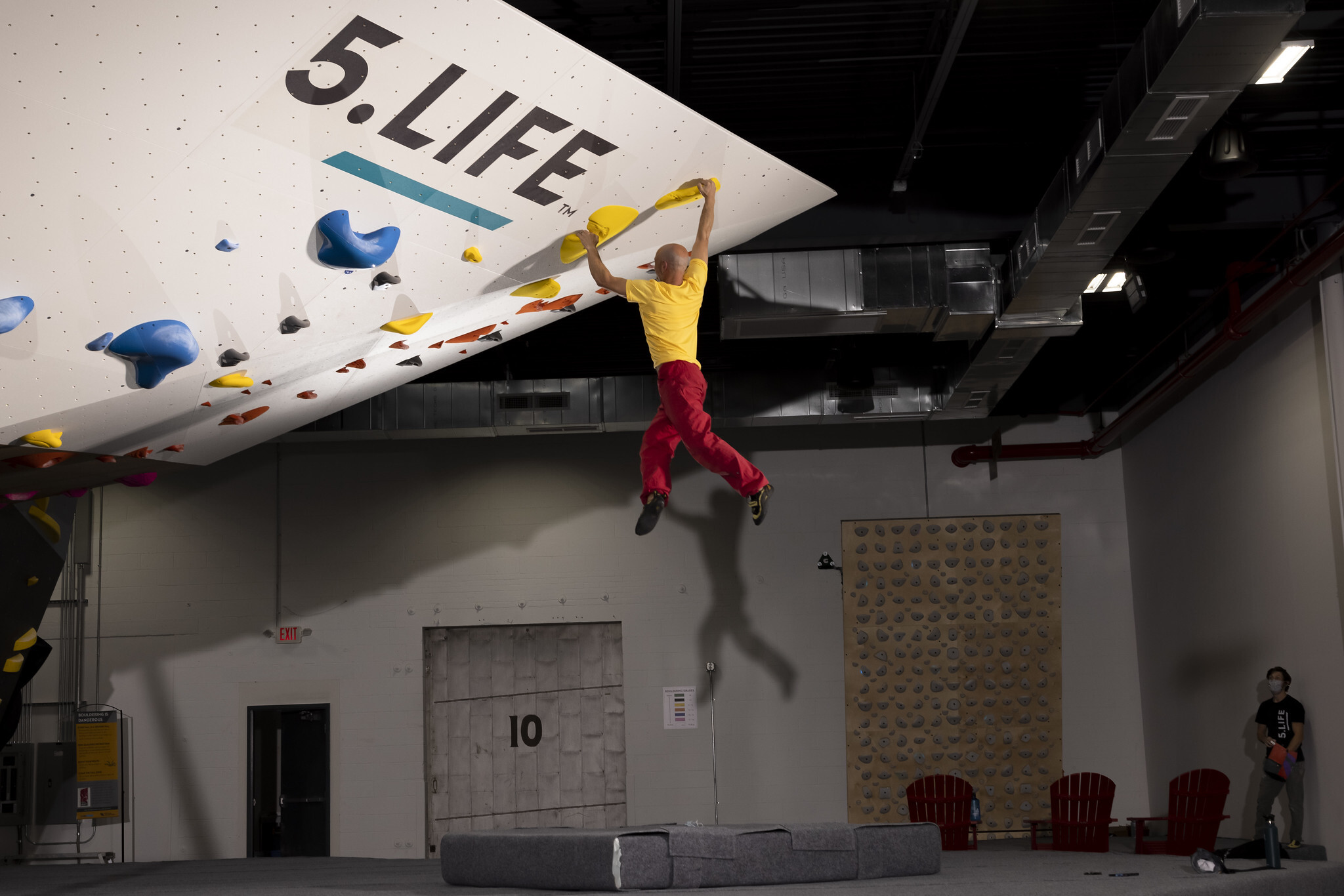Develop proper falling techniques for bouldering to maximize your climbing experience. Are you climbing far above the ground without protection besides big foam mats? It can be scary!
With proper falling technique, you won’t only climb better, but you’ll feel more comfortable on the wall. Learning to fall correctly is not just about safety. It’s about having more fun when bouldering. So, let’s dive into these tips and make your climbing experience even more enjoyable.
At a glance, the correct way to fall off a boulder is to land on your feet, facing the wall. Bend your knees and be ready to absorb the energy, then roll onto your back while bringing your arms across your torso.
Don’t worry; it sounds tricky, but with some practice, you’ll be a pro at falling. Here is a breakdown of each movement so you can learn the proper falling technique and have more fun on the climbing wall. Remember, it’s all about the journey, and you’ll get there with patience and practice.
So let’s learn how to “Bear Hug Fall.”

Spot The Landing
You want to do this before you even step on the wall. Follow the boulder with your eyes and imagine where you’d land if you fell from each move. It’s crucial to clear the bouldering mats of any water bottles or chalk buckets hanging around so you don’t land on them.
Then, as you climb, be aware of your surroundings and confirm that the ground below is clear. Other climbers know not to walk under others and to stay back from the wall when not climbing, but sometimes, some need to pay more attention to their surroundings.
Once you know you’ll fall, look down and spot your landing again. You want to absorb the energy when you land, so you should know precisely when to bend your knees and roll backward.
Bend Your Knees
You always want to land on the bouldering mats with bent knees to absorb as much of the fall as possible. Landing with locked knees has the potential for serious injuries, and climbing is supposed to be about fun!
When you land, your legs don’t have to be bent at a 90° angle; slightly bent is perfectly fine to create the proper falling technique. Do this to save your joints and continue climbing.
Tuck Your Arms (Bear Hug)
Most climbing gyms will demonstrate how to properly fall off a boulder during your orientation when you first arrive. If you notice, they’ll cross their arms across their torso as they roll onto their back.
Crossing your arms across your torso is the ideal way to fall. Again, climbing is about having fun; nobody wants to get injured. The main takeaway from this step is that you should never land with your arms out and behind you.
Many people will try to absorb a fall by laying their hands on the mat, but that’s what your legs are for. Laying your hands out can result in injuries such as a broken arm- not helpful for climbing.
Roll Backward
The last step is to combine these movements and roll onto your back. While your legs absorb much of the force from falling, rolling will help absorb the rest.
Make this as dramatic as possible. The more you perfect the roll, the more force you’ll absorb. As physics tells us, you’ll need to absorb more force the higher you fall. Sometimes, you may fall and barely roll backward; other times, you may do a full backward summersault; each fall is different!
Falling Tips
Now that you have the basics for the proper falling technique when bouldering check out these tips to help dial everything in and build your confidence on the wall.
- Practice, Practice, Practice!
Remember, practice makes perfect. You don’t even need to be on the wall to practice falling. Step on the bouldering mat (spot your landing) and practice perfecting your falling technique. The more you practice, the more confident and skilled you’ll become.
As you gain confidence, climb up a little higher each time and keep falling until you’re comfortable. Remember, the more you practice, the more confident you’ll become in falling safely and effectively.
- Proprioception – The ability to know where you are in space and time.
This is the process of moving your limbs without looking at them. While incredibly important for climbing, it is also essential for falling. A heightened sense of your body will help you climb and fall better, allowing you to react quickly and accurately to changes in your position.
A heightened sense of your body will help you climb and fall better.
- Read The Boulder
Reading a boulder problem before you hop on the wall is helpful for sending, but it’s also good practice to identify places where you may fall. Look for areas with tricky movements or holds that are far from the ground. Imagine the climbing movements on the ground in these areas to prepare for potential falls.
By identifying holds or movements that will be trickier, you can prepare yourself for how to move your body if you slip. Falling sideways, forward, or in an awkward position can be scary, but placing yourself in those positions before climbing can help you make corrections when hurling toward the mats to fall correctly

Recent Comments